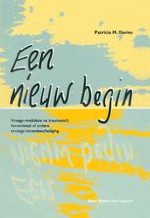Gepubliceerd in:
1997 | OriginalPaper | Hoofdstuk
3. Bewegen en bewogen worden in lig en in zit
Abstract
‘Bewegen heeft alles te maken met het leven van de mens en de spier is de enige die daarvoor zorgt, of dat nu is om een woord te fluisteren of om een bos om te hakken’ Sherrington, 1947). In feite bewegen we, als we wakker zijn, voortdurend een deel of delen van ons lichaam, en zelfs als we slapen blijven de spieren voor de ademhaling en voor andere vitale functies ritmisch contraheren om ons in leven te houden. Als we een tijdlang niet bewogen hebben, voelen we ons stijf en ongemakkelijk, zodat het eerste wat we doen na het ontwaken uit een diepe slaap of na het bekijken van een lang en boeiend televisieprogramma, is bewegen en ons uitrekken. Een patiënt die buiten bewustzijn is of zich zelf niet kan bewegen, moet door anderen bewogen worden, omdat anders zijn romp en extremiteiten in een gefixeerde stand verstijfd raken, en hij voelt zich dan niet alleen ongemakkelijk, maar het doet ook pijn als hij bewogen wordt. Als hij niet de volledige mobiliteit behoudt, heeft hij later, wanneer hij begint te herstellen, ook veel meer moeite om weer actief te leren bewegen.
